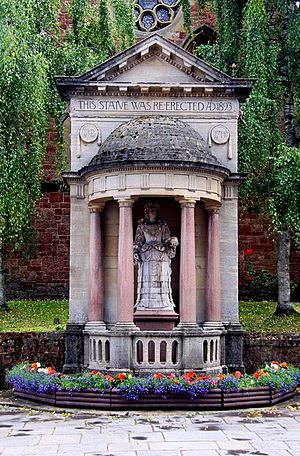Jacob Bancks facts for kids
Sir Jacob Bancks (also spelled Banks, Bankes, or Banckes) (1662–1724) was a brave naval officer from Sweden. He served in the British Royal Navy. Later, he moved to England and became a politician, known as a Tory Member of Parliament.
Contents
Early Life and Diplomacy
Jacob Bancks was born in 1662. His parents were Lawrence Bengston Bancks, a customs commissioner, and Christina, both from Stockholm, Sweden.
In 1681, when he was about 19, Jacob came to England. He worked as a diplomat, helping his uncle, Johan Barckman Leijonberg. His uncle was the Swedish ambassador in London at that time.
Jacob Bancks joined the Royal Navy in 1681. This was the start of his exciting naval career.
Hero at Sea
In 1690, he fought in the Battle of Beachy Head. During this important battle, his captain was injured. Jacob bravely took over command of the ship.
Soon after, he was made a captain himself. He was given command of HMS Cambridge in September 1690. That same year, he bought a large estate called Hall Place in Berkshire, England.
In 1692, Captain Bancks was commanding HMS Phoenix. His ship was off the coast of Spain. A much stronger French naval force attacked them.
To stop the French from capturing his ship, the Phoenix had to be set on fire. This was a difficult decision to make.
In 1693, Bancks became captain of HMS Carlisle. He was knighted in 1698, which meant he was given the title "Sir." At that time, he was captain of HMS Russell, a ship he had commanded since 1696.
Life in Politics
In 1696, Sir Jacob Bancks married Mary Luttrell. She was a widow. After his marriage, he became a Member of Parliament (MP) for Minehead in 1698.
Political Rivalries
Sir Jacob was a member of the Tory party. At that time, there were strong disagreements between the Tory and Whig political groups. He became involved in these intense political rivalries.
Sir Jacob Bancks was friends with other important people, including Admiral George Rooke. They were part of a special club.
In 1711, a Whig writer named William Benson criticized Sir Jacob. Benson disagreed with Sir Jacob's ideas about "passive obedience." This idea meant that people should always obey the king, even if they disagreed with him. Benson linked this idea to the absolute power of kings, like Charles XII of Sweden.
Sir Jacob Bancks continued to win elections for Minehead. He served as an MP until 1715.
Involvement in the Jacobite Plot
Sir Jacob Bancks was later connected to a secret plan called the "Gyllenberg Plot" in 1716–1717. This was a Jacobite conspiracy. Jacobites were people who wanted to bring back the old royal family (the Stuarts) to the throne of Britain.
Sir Jacob was taken into custody in January 1717. He and another person had raised a lot of money, about £18,000. This money was sent to Sweden to help a possible Jacobite invasion of Britain. However, Sweden did not really plan to use the money for that purpose.
Legacy and Family

Around 1715, Sir Jacob Bancks asked a famous sculptor named Francis Bird to create a statue of Queen Anne. This beautiful statue was placed in Minehead.
Sir Jacob Bancks had a son named Jacob Bancks (1704–1738). His son also became a Member of Parliament.

